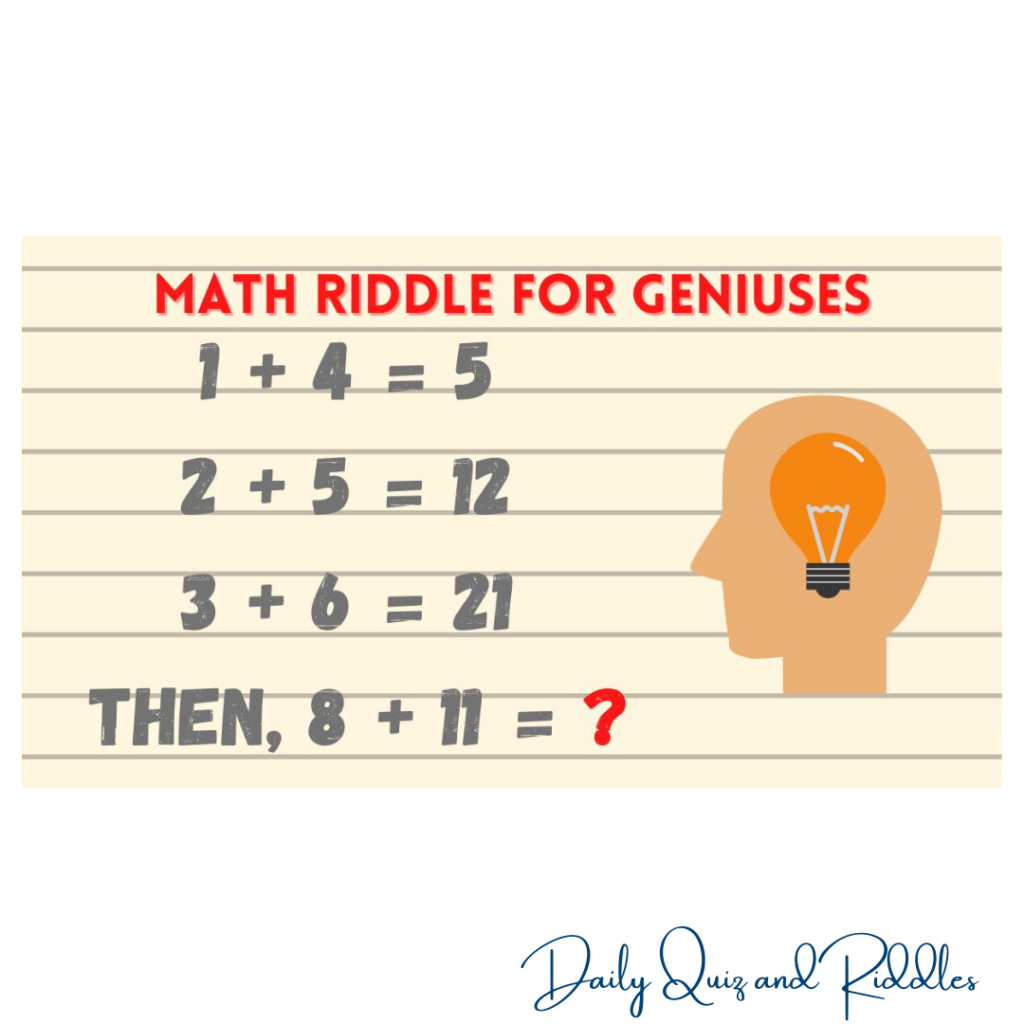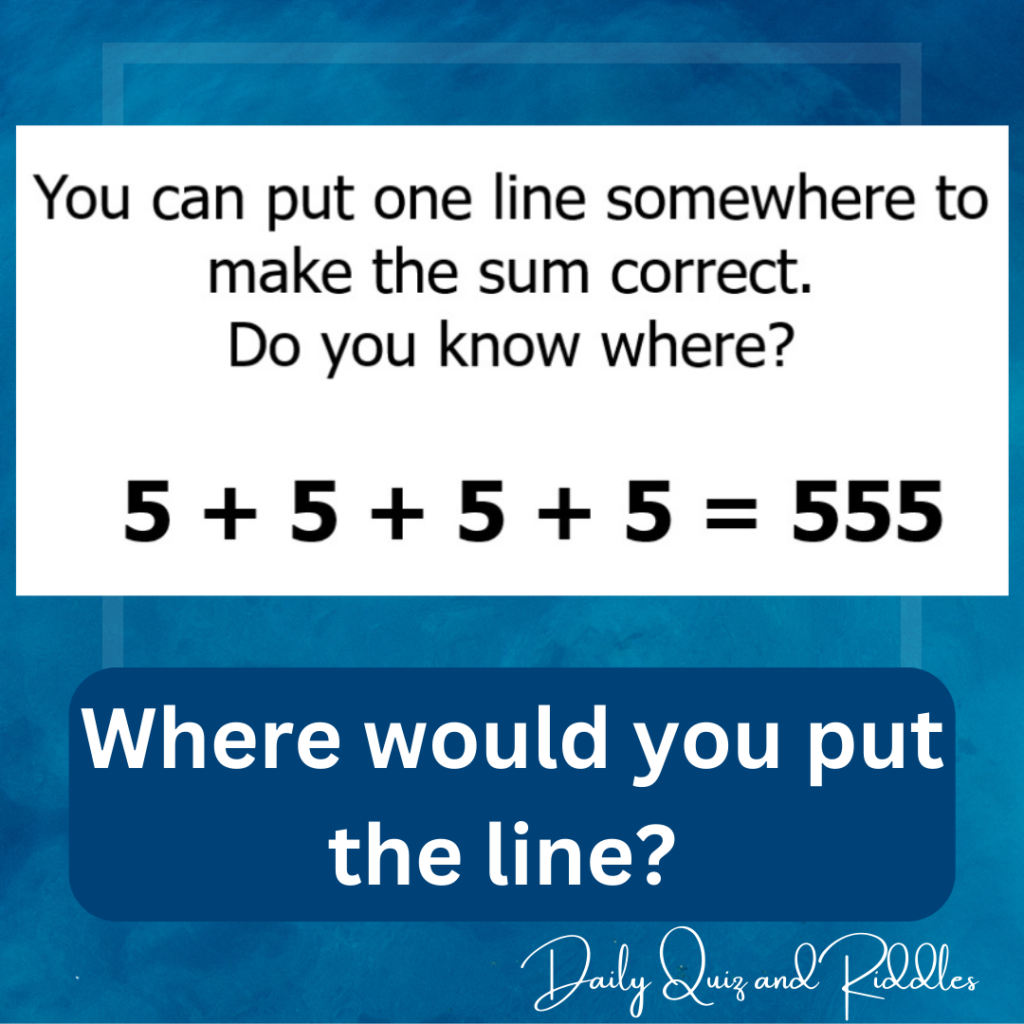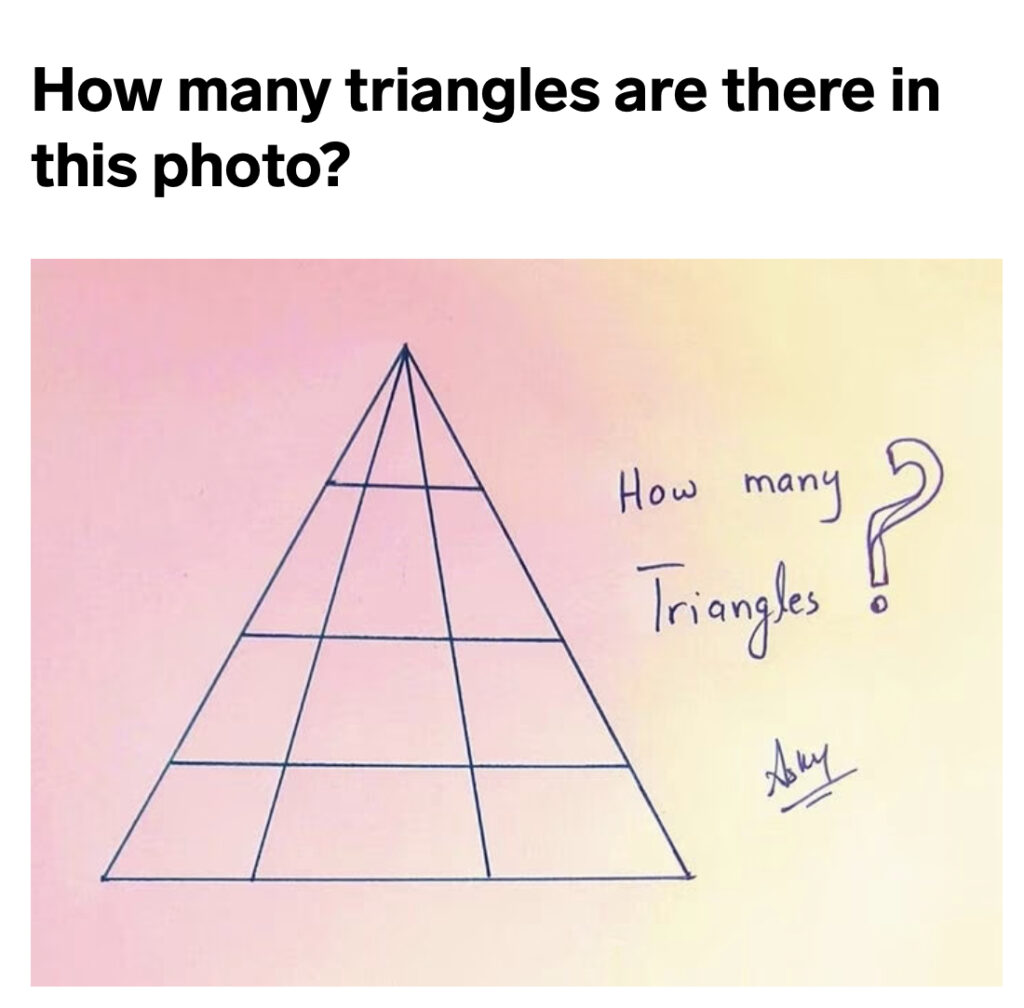Riddle
- 1 + 4 = 5
- 2 + 5 = 12
- 3 + 6 = 21
- Then what is 8 + 11?
Answer:
96
Explanation:
Now, you’re probably pissed if your answer was 40, but hold on, you’ll see why we didn’t choose this answer before the end of this article!
Welcome, fellow puzzlers, to another mind-bending quiz where numbers hold the key to unlock the solution! In this particular riddle, we are presented with a series of equations that follow a specific pattern. Let’s dive in and unravel the mystery behind them!
A problem like this in mathematics required a representation with an equation, such that at any given time, you can use this equation and get your answer without much hassle! Our task is to find the equation that represents this problem at any point.
1 + 4 = 5: In this equation, if we multiply the first number, 1, by the second number, 4, we get 4. Adding the first number again gives us the expected result of 5.
2 + 5 = 12: Ah, here’s where the twist comes in! Instead of simply adding the first and second numbers, we multiply the first number, 2, by the second number, 5, to get 10. But wait, there’s more! We add the first number, 2, to our result, giving us the final answer of 12.
3 + 6 = 21: The pattern continues to surprise us! Multiplying the first number, 3, by the second number, 6, gives us 18. And once again, we add the first number, 3, to our result to obtain the unexpected answer of 21.
Now we have been able to prove that in order to solve this quiz, we have to follow the equation: (First number x second number) + First number.
Now, with our sharp minds and newfound knowledge of the pattern, let’s apply it to the ultimate challenge: 8 + 11. According to the established pattern, we need to multiply the first number, 8, by the second number, 11, resulting in 88. But we don’t stop there! We add the first number, 8, to our result, giving us the final solution of 88 + 8 = 96.
Why not 40?
Some might say using summation gives 40, but we need to know that summation (∑) would work for a sequence, which this is clearly not. Thus, since the answer 40 cannot be represented with an independent equation, it is more logical to go with 96. The only form of equation that would have given us 40 is (Sum of the two numbers) + (Previous answer). But even at that, when we completely solve the series of equations, we arrive at 96, not 40. This is because mathematical problems are always logical.
Still confused, let’s take an interesting example to put an end to this argument. In this example, we will sum all the numbers until we get to 8 + 11. Prepare for an interesting turn of events.
- 1 + 4 = 5
- 2 + 5 (+5) = 12
- 3 + 6 (+12) = 21
- 4 + 7 (+21) = 32
- 5 + 8 (+32) = 45
- 6 + 9 (+45) = 60
- 7 + 10 (+60) = 77
- 8 + 11 (+77) = 96
Voila! Here we are again at 96!
We can then conclude that the solution to the riddle is 96. By multiplying the first number, 8, by the second number, 11, and adding the first number again, we arrive at this surprising but consistent result.
What’s even more amazing? Now with this method, we can solve for any given numbers. Go on, try 10 + 13 :-))



